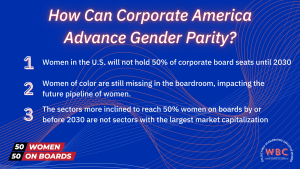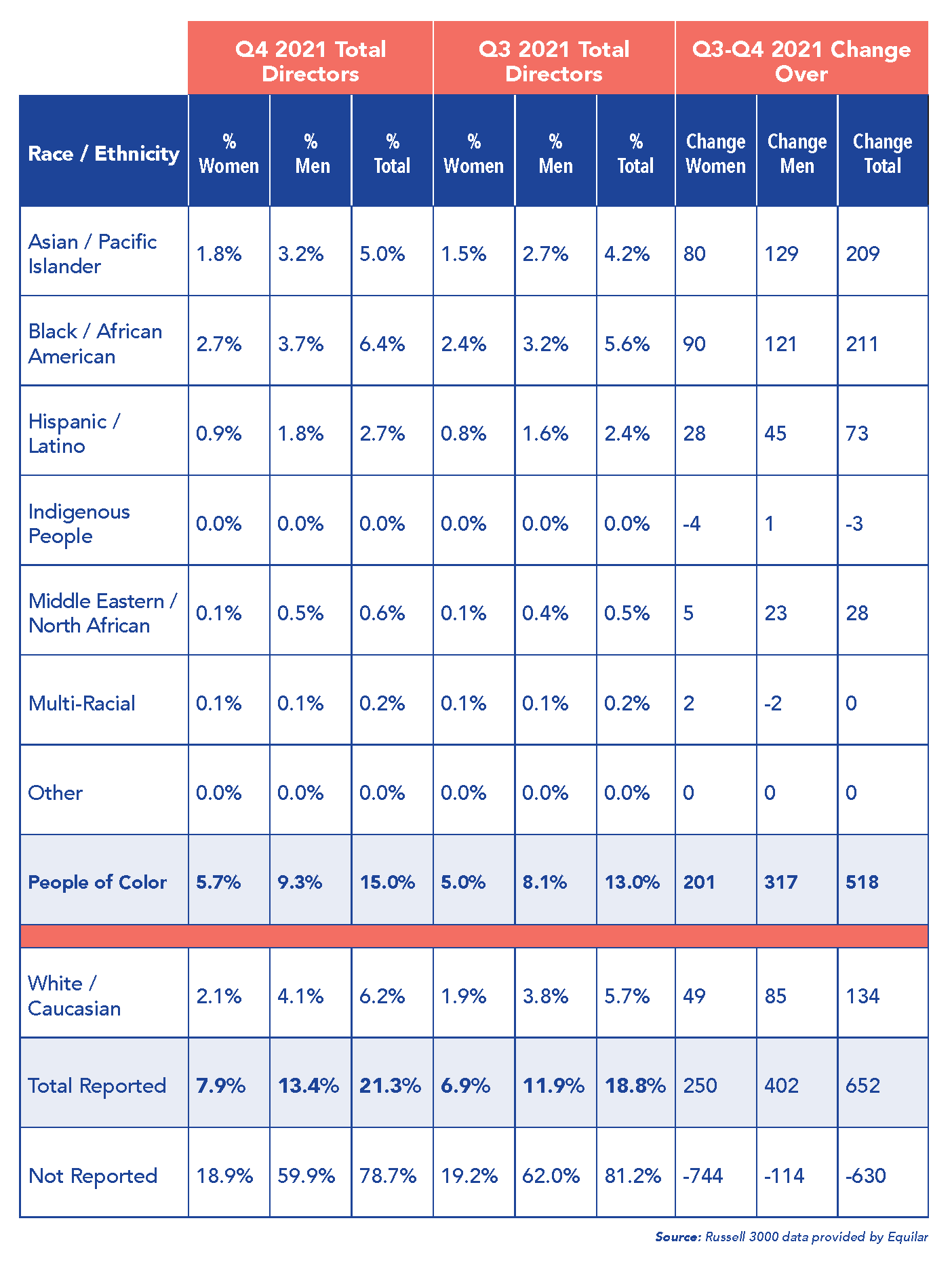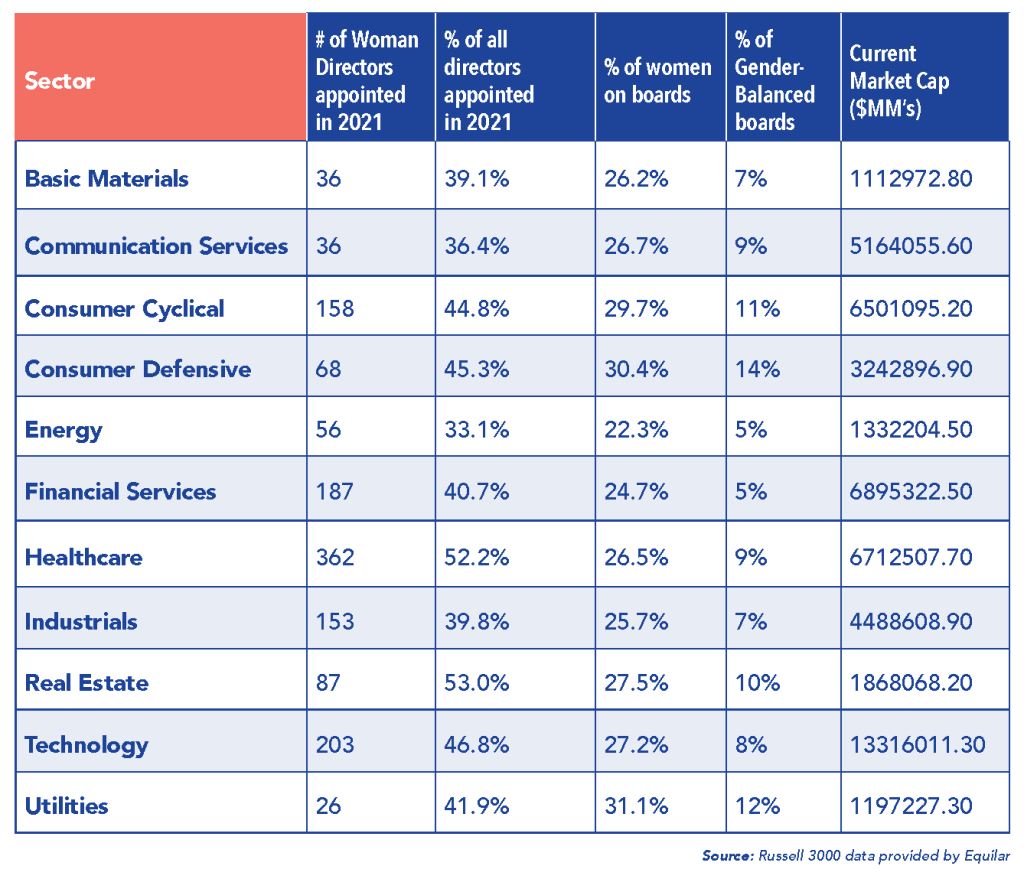
How Can Corporate America Advance Gender Parity?
April 13, 2022

The following is an excerpt from the Women Leading Boards April 2022 Special Report – In Partnership With 50/50 Women On Boards™. Click here to view and download the full report.
Using the Russell 3000 Public Company data provided by Equilar, 50/50 Women on Boards™ examined the trends for women appointed to the Russell 3000 Company Boards in 2021, and as of December 31, 2021, observed four key themes:
1. Women are gaining seats, but at the current rate of change, women in the U.S. will not hold 50% of corporate board seats until 2030.
As of December 31, 2021, women hold 26.7% of the Russell 3000 company board seats, a 10.7% increase over the last five years. While progress has been made, at the current rate of change, women are not expected to hold 50% of corporate board seats until 2030. To cut the estimated timeline in half, and reach the goal by 2026, the percentage of women needs to increase by 5.8% year-over-year, almost doubling the percentage increase from 2020 to 2021.
2. Women of color are still missing in the boardroom, impacting the future pipeline of women.
While the pandemic and the death of George Floyd charged companies to re-evaluate their diversity, equity and inclusion efforts and initiatives, the success and advancement of women, especially women of color, continue to be challenged by workplace bias including pay equity, recognition, family leave, well-being, and flexibility.
Why is this relevant to boards? It challenges women, especially women of color in the pipeline to advance to the highest levels of leadership.
Based on those who self-identify, as of Q4 2021, women of color only hold 6% of company board seats, while men of color hold 9%—a slight increase from the previous quarter. Of those who self-identify and hold seats on public boards, currently, Blacks / African Americans hold the highest percentage of seats, 6.4% total and 2.7% of those are women; Asians / Pacific Islanders hold 5% total, with women accounting for 1.8%; and Hispanics / Latinos only hold 2.7% total, with women holding less than 1% of the public board seats. Additionally, Indigenous Peoples, Middle Eastern / North Africans, Multi-Racial, and those who self-identify as Other collectively hold just 242 of the 27,050 director seats on boards.
The positive change from the previous quarter is more directors, especially newly appointed directors, are self-identifying. Of the total new directors in Q4 2021 who self-reported, 30.2% are people of color, with women of color accounting for 15.5% of the board appointments and men of color representing 14.6%.

However, underrepresented groups continue to be overlooked for promotions and were not as frequently provided the opportunity to upskill, according to a recent article published by Society for Human Resource Management. The employer and employee relationship requires a shift in balance, so the future pipeline of women and men of color are provided the same opportunities to advance and to serve on boards.
3. The sectors more inclined to reach 50% women on boards by or before 2030 are not sectors with the largest market capitalization.
By the end of 2021, all sectors surpassed 20% women on boards. Sectors with more than 25% women on boards include all but two, Financial Services and Energy.
Utilities, Consumer Defensive, and Consumer Cyclical have nearly 30% or more women on boards and more than 10% of companies are gender-balanced, with Real Estate closely trailing behind. The companies with the largest market capitalizations, including Technology, Financial Services and Healthcare, added more women to boards than other sectors, but overall, the percentage of women on boards continued to lag.


